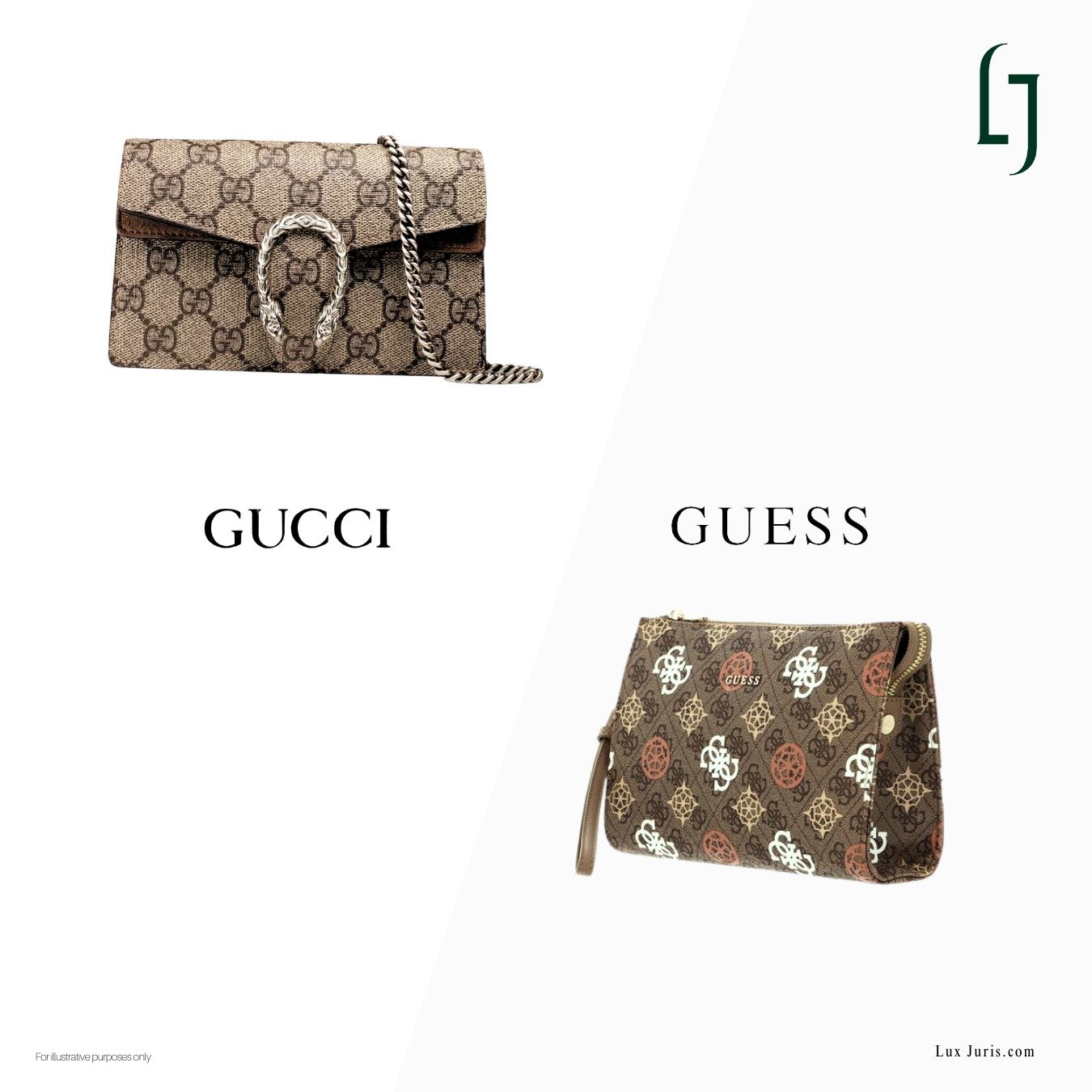The gucci vs guess trademark dispute offers a clear view of the challenges involved in protecting brand identity in fashion. What began with Gucci’s decision to take legal action over the alleged imitation of its distinctive design features developed into a prolonged conflict across multiple jurisdictions. While Gucci secured favourable rulings in some courts, the dispute concluded in 2018 with a confidential settlement. The case shows how enforcing design-oriented trademarks can be a long and unpredictable process, shaped by varying legal standards and commercial considerations.
Gucci’s Claims
In 2009, Gucci filed a lawsuit against Guess in the United States, alleging that Guess had copied key elements of its well known designs. Gucci claimed that Guess had incorporated interlocking G logos, green-and-red stripes, and diamond patterns on a range of products, including wallets, belts, and shoes. These similarities, Gucci argued, diluted its brand identity and caused financial harm by misleading consumers and devaluing its trademarks.

The case went before the U.S. District Court for the Southern District of New York in 2012. The court ruled in Gucci’s favour on multiple claims, determining that Guess had infringed upon several of Gucci’s trademarks, including the green-and-red stripe design, stylised Square G, and Quattro G pattern.

However, while Gucci was awarded $4.7 million in damages, this was far less than the $221 million it had initially sought. The court also ruled that Guess was not guilty of counterfeiting, stating that while the infringement weakened Gucci’s trademarks, it did not constitute exact copying. This distinction between dilution and counterfeiting would become a key takeaway in trademark law.
Gucci vs Guess Across Jurisdictions
Unwilling to stop with its U.S. victory, Gucci expanded its legal battle across multiple jurisdictions. The brand pursued similar claims in Australia, China, and the European Union, reflecting the global nature of intellectual property enforcement. Luxury brands often face the challenge of maintaining their distinctiveness across diverse markets, making global enforcement a necessity rather than an option.
Gucci also took legal action before the European Union Intellectual Property Office (EUIPO), highlighted how trademark disputes require multi-pronged legal strategies that go beyond national courtrooms. The brand’s aggressive approach highlighted the complexities of global brand protection and the legal hurdles involved in enforcing trademarks internationally.
Despite securing favourable rulings in some jurisdictions, the case highlighted how lengthy, costly, and unpredictable international trademark disputes can be. The persistence of both brands demonstrated that trademark enforcement is not just about legal wins but also about long-term brand positioning and market perception.
Gucci vs Guess Settlement Its Impact
In 2018, Gucci and Guess issued a joint statement confirming they had resolved all ongoing lawsuits and administrative proceedings. The exact terms of the settlement were not disclosed. Both brands expressed respect for each other’s intellectual property and agreed to end their disputes worldwide.
The Gucci vs Guess dispute concluded in a way that let both sides move forward without incurring further legal costs. For Gucci, it confirmed its efforts to protect its design identity. For Guess, it removed the risks of extended litigation for both reputation and finances.
Lessons from Gucci vs Guess for Fashion and IP
Trademark enforcement requires persistence
Gucci’s extended litigation shows that brand protection is not just about registering trademarks but about actively responding when others come too close. This is especially relevant for fashion houses where designs can be imitated in subtle ways.
Not every infringement is counterfeiting
The U.S. court’s decision clarified that an infringing design may weaken a trademark without meeting the threshold for counterfeiting. Understanding this difference is important when evaluating legal options.
Cross-border results vary even with similar facts
Although Gucci’s claims were similar across jurisdictions, the gucci vs guess dispute had mixed results. This points to the importance of considering how local courts and IP offices assess similarity and brand recognition.
Legal action can shape brand perception
For Gucci, the dispute also served to signal its seriousness about protecting its designs. Legal proceedings may have commercial as well as legal outcomes, particularly in sectors where image and exclusivity matter.
Conclusion
The gucci vs guess dispute extended over several years and jurisdictions, raising important issues about trademark enforcement in fashion. Gucci pursued its claims through courts and administrative offices worldwide, achieving mixed outcomes before ultimately settling the matter. The case addressed the boundaries of trademark infringement, clarified distinctions between dilution and counterfeiting, and demonstrated how brand identity is tested through legal process as well as market presence.
It also illustrates the broader reality for fashion brands, protecting distinctive brand features goes beyond registering rights. It requires constant vigilance, a clear legal stance, and an awareness of commercial risk. While originality is priceless, getting too close to a competitor’s identity can come at a cost few brands can afford.
Updated on 17 June 2025
Sources:
https://law.justia.com/cases/federal/district-courts/new-york
